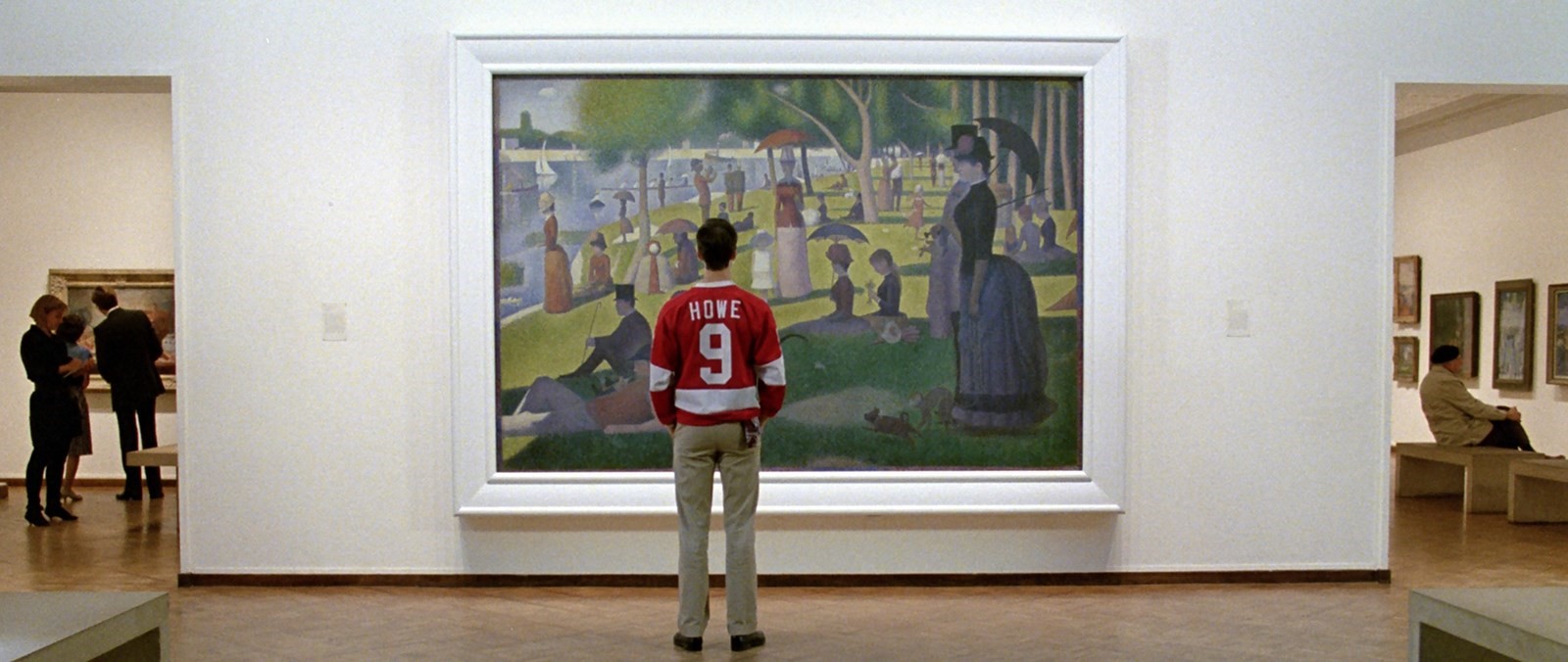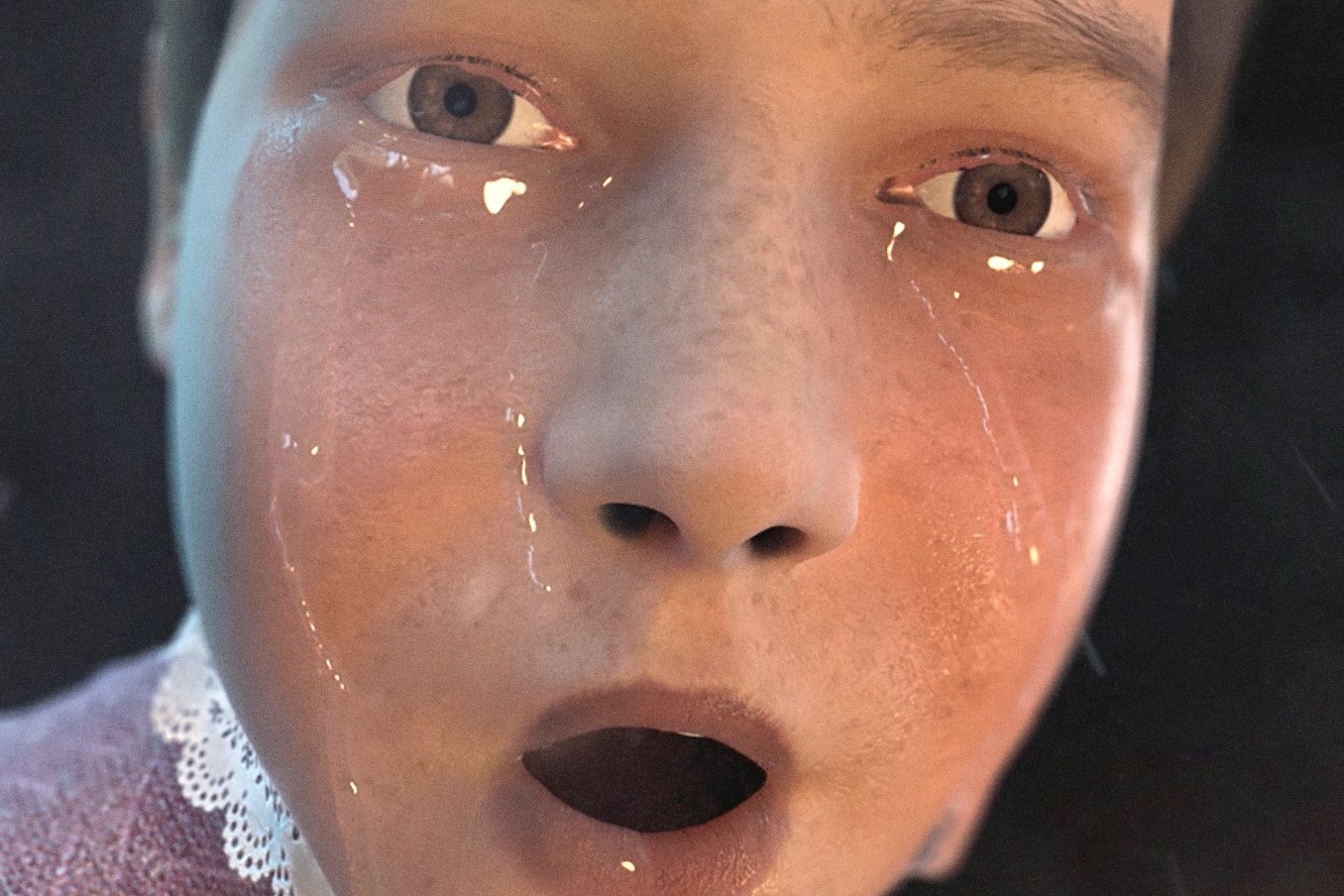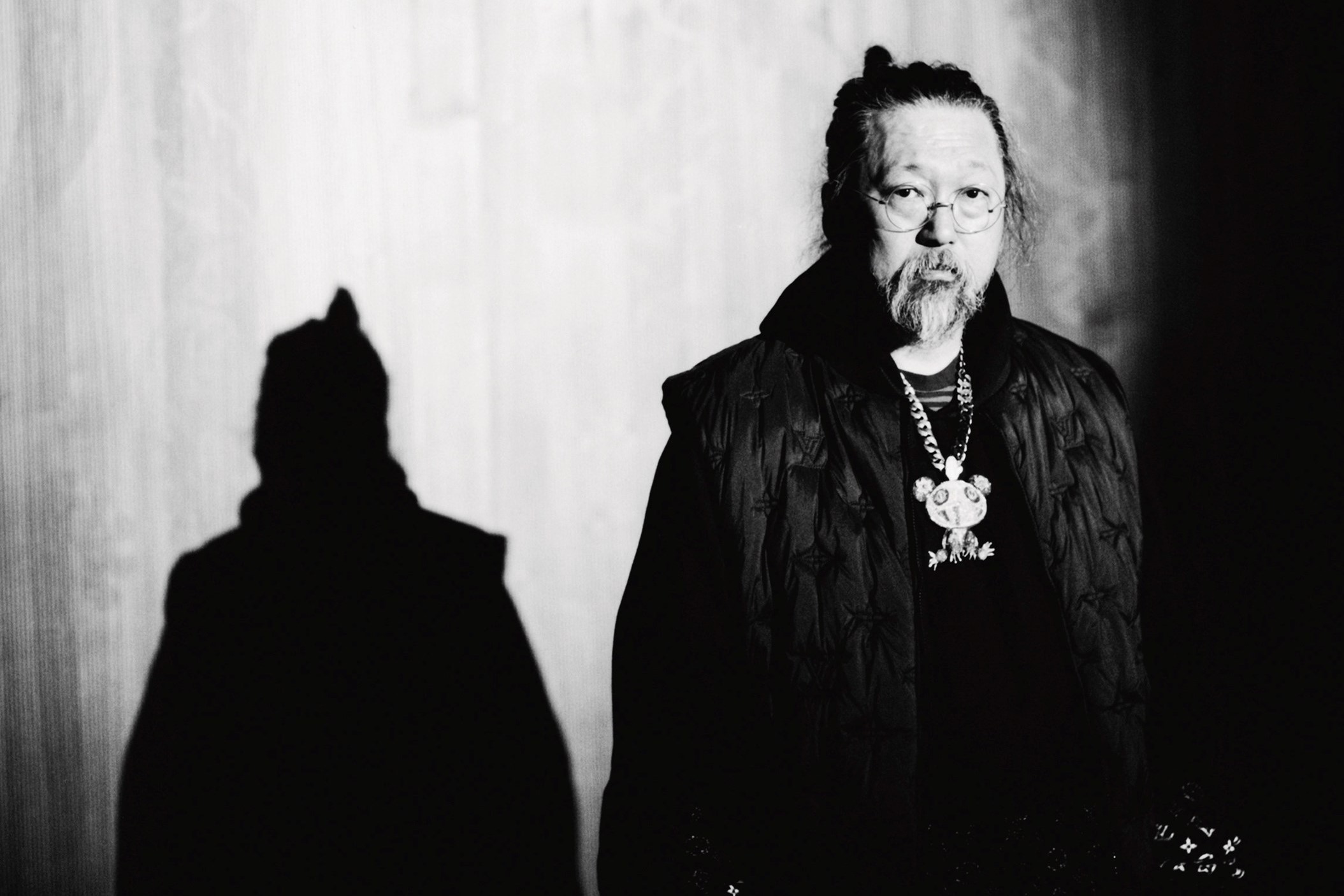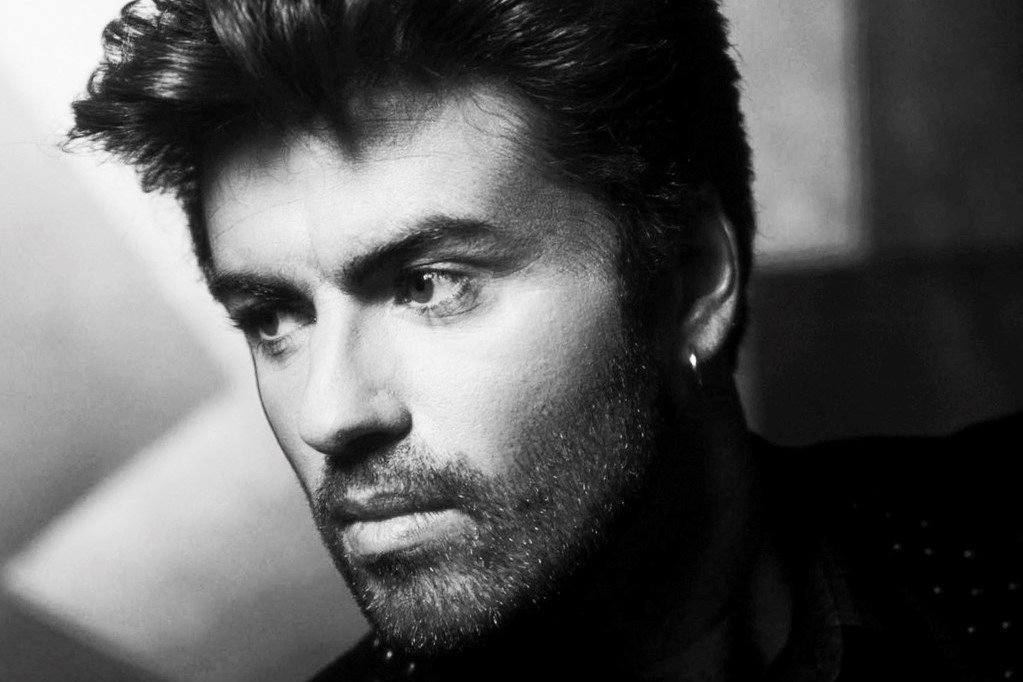Hollywood loves an art biopic, but incorporating works into cinema is a tricky task; these five films shoehorn iconic art for plot points, props and sometimes plain plagiarism
A common thread between some of cinema’s best filmmakers, aside from any innate talent, is the desire to prank their audience. Both Hitchcock and Kubrick made surreptitious cameos throughout their career. David Fincher, in Fight Club, inserts a Starbucks coffee cup into every scene. Scorsese, throughout The Departed, foreshadows each character’s death by inserting a visible ‘X’ into the architecture of their final scene. However, while directors are eager to scatter frames with these enigmatic Easter eggs, certain go further – shoehorning artworks into their backdrops for various effects. A new film, Loving Vincent, premiering at October’s London Film Festival, is the world’s first oil-painted film – lovingly bringing Van Gogh’s life to the screen using his own techniques. Viewers can catch fleeting glimpses of their favourite canvases throughout, and to celebrate this unique achievement, AnOther examines five other times iconic art has featured in film.
1. Ferris Bueller’s Day Off (Sunday à la Grande Jatte, Georges Seurat)
Few films depict the insouciance and idiocy of high-school’s final days like John Hughes’ 1986 classic. With Bueller’s insistence we “stop and look around once in a while”, the film takes an unlikely detour to the Art Institute of Chicago, where the characters steal a moment amid the Picassos, Rothkos, and, most notably, Georges Seurat’s Sunday à la Grande Jatte. Bueller’s hangdog sidekick Cameron is entranced, with Hughes quickly cutting between a pointillist figure of the paintings, and Cameron’s numbed expression. Hughes himself said “The more Cameron looks at it, [he realises] there’s nothing there; he fears that the more you look at him there isn’t anything to see.”
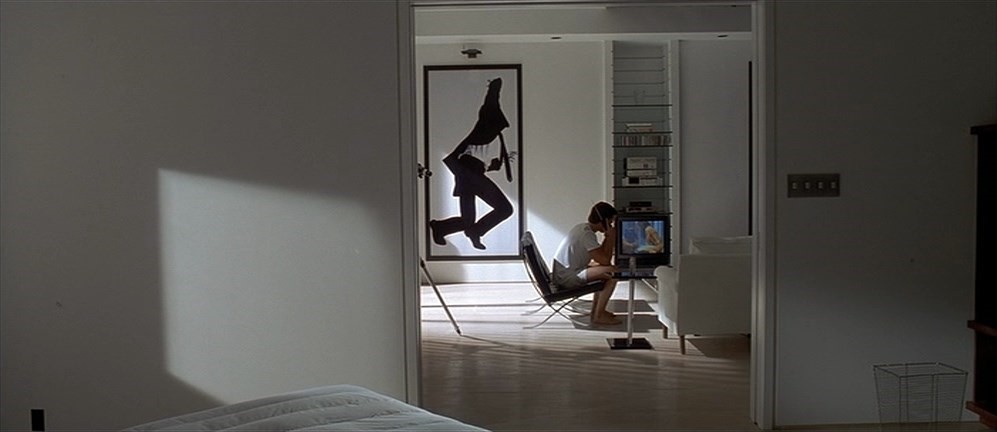
2. American Psycho (Men in the Cities, Robert Longo)
Better known for its business card aesthetics than fine arts pedigree, American Psycho nonetheless fits out Patrick Bateman’s apartment with art more than arteries. While Patrick Bateman’s morning routine is a masterwork in itself, director Mary Harron draws our gaze beyond his preening rituals to the white walls of his loft. Robert Longo, an oft-overlooked wunderkind of the 80s NYC art scene, seized fame with his seminal Men in the Cities series, displayed prominently throughout Bateman’s otherwise sterile pad. The contorted shapes, writhing expressions and anonymous figures are a fitting mirror for Bateman’s own inner turmoil.
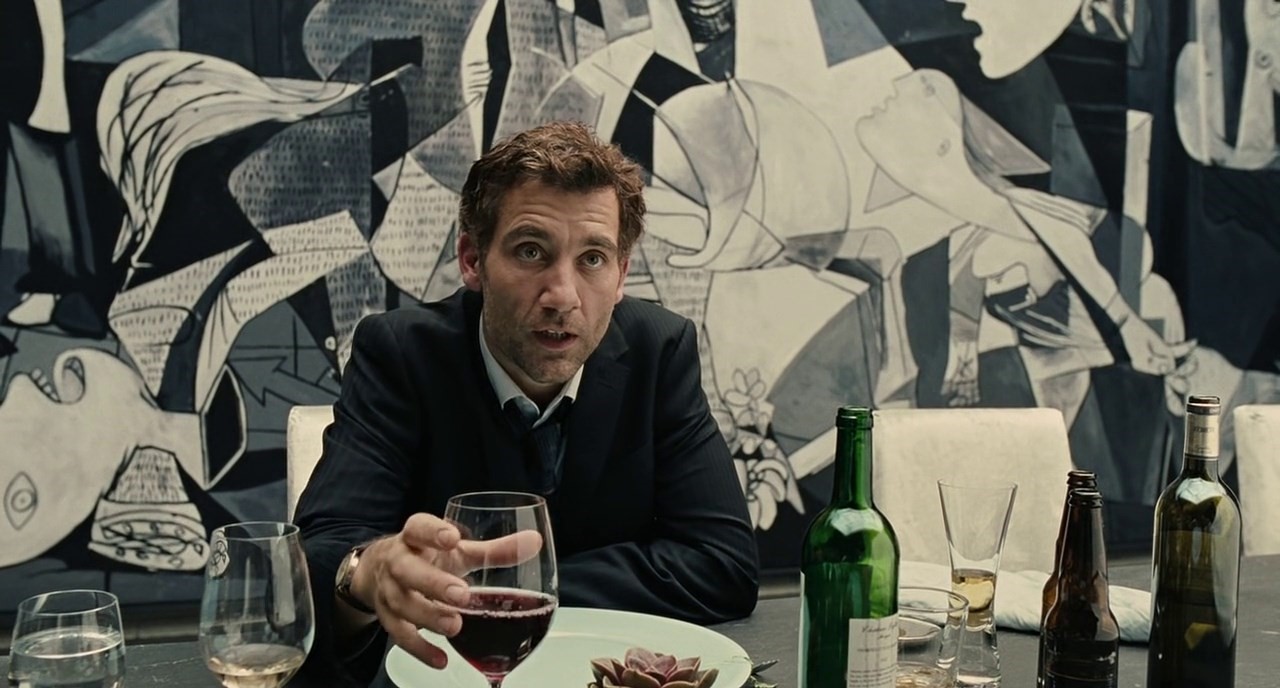
3. Children of Men (Guernica, Pablo Picasso)
A bleak swirl of ideas, icons and art, Children of Men is also a film designed for repeat viewings. Frame upon frame is stacked with revelatory information, with Alfonso Cuarón’s version of 2027 London brimming with brands, stores, and products of this new era, all flashing across our screen for fractions of seconds. Forming the backdrop to a key scene, in which Julian (Clive Owen) and his cousin (Danny Huston) contest the merits of survival in their dystopian country, Picasso’s Guernica hangs – quite literally framing the pair amid the horrors of war. Throughout, Banksy, Michelangelo’s David, and Pink Floyd homages all feature; subtle reminders to keep your eyes peeled.
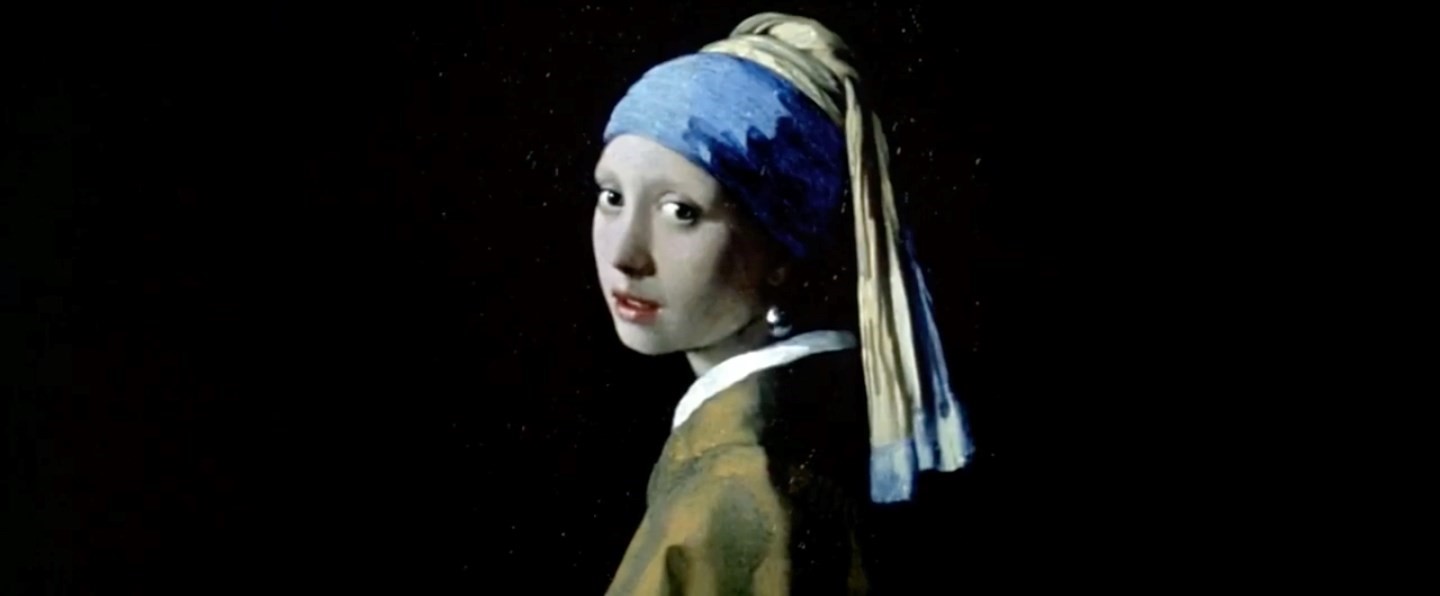
4. Girl with a Pearl Earring (Girl with a Pearl Earring, Johannes Vermeer)
Dubbed the ‘Mona Lisa of the North’, few canvases have spurred such speculative history as Vermeer’s Girl with a Pearl Earring. Released in the same year as Lost in Translation, this film helped usher Scarlett Johansson into superstardom, her eerie resemblance to Vermeer’s muse adding a dose of authenticity to this fictional setting. A slow zoom, lasting around 20 seconds, cherishes the final result – pulling out slowly from the canvas of the surface, as though we are Vermeer himself, tearing his face away his work for the very first time. The morass of opposing thoughts at play within the girl’s face aligns well with Johansson’s own opaque features.
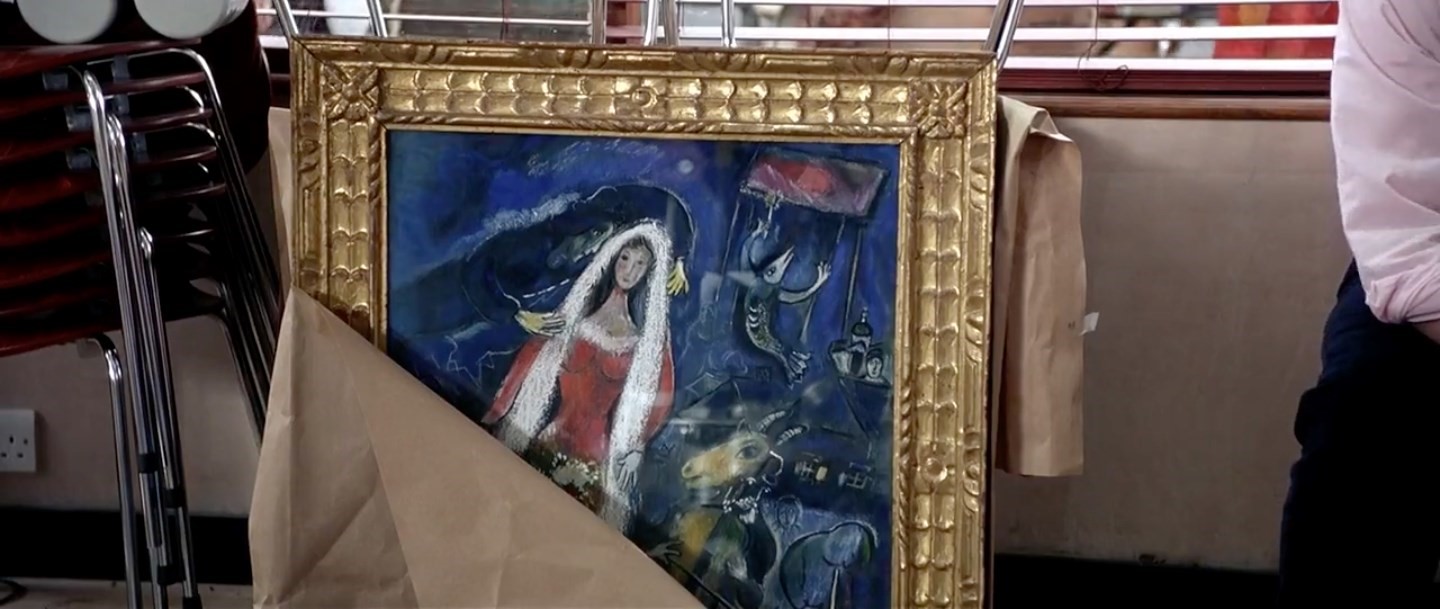
5. Notting Hill (La Mariée, Marc Chagall)
The shaggy charms and endearing performances of Roger Michell’s 1999 film (almost) atone for its implausible depiction of London life. While Rhys Ifans’ wardrobe is iconic for all the wrong reasons, the recurring appearance of Marc Chagall’s La Mariée is a sweet, subtle nod to the film’s themes. Michell claimed he included the canvas because it “depicts a yearning for something that’s lost”. As for its significance to the characters, as Julia Roberts says, “happiness isn’t happiness without a violin-playing goat”.
Loving Vincent premieres at the London Film Festival on October 9, 2017.
